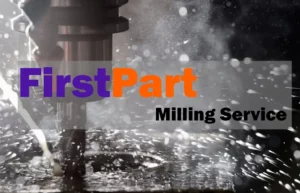Corrosion resistance is one of the key considerations when designing parts with metals or metallic alloys. Corrosion, which also refers to rust, is occasioned by the exposure of metal parts to oxygen and moisture. During corrosion, the metal parts react to reach their more stable form.

While there are many ways to prevent corrosion through finishing, corrosion can also be addressed in the design stages. Here’s how:
Reconsider the material
Material considerations are an integral part of product design. One of the obvious ways to avoid corrosion entirely is to move away from metallic materials and alloys. Consider if your part is feasible with plastic material, and instead use a finishing technique to convey the metallic aesthetic desired in the product.
Where plastic is not a feasible alternative, consider another type of metal alloy. Alloys of aluminum and stainless steel have a decent level of natural corrosion resistance and exist in many forms to match various end uses.
Factor application environments
The environment where the product will be used must also be considered before finalizing the product design. If you design a part that will have minimal exposure to environmental factors, then the chances of corrosion become lower. If your part is used in high-performance applications where moisture, heat, air, and electrolytes may come to contact it, you will need to plan your design for some type of coating or finishing to prevent it from rusting.
Avoid crevices in part design.
Crevices and holes in your part’s design can facilitate the trap of moisture and other chemicals in and underneath your product. Crevices are usually seen at joint parts and areas in the design where stress may concentrate over time. When a metal surface becomes wet, there becomes an imbalance in oxygen concentration on the part and the environment. Corrosion resistance can be prevented by ensuring that there is a balanced oxygen concentration around your part.

By removing crevices and traps, you can optimize your design to reduce to likelihood of rust. Design your part to allow for a free water flow and regular maintenance without any molecules being trapped underneath. Where crevices and pockets cannot be avoided in your design, be sure to use weather sealing. Finally, avoid connections between dissimilar metals to lower the risk of bimetallic corrosion. If you must use different materials prone to corrosion, ensure that their contact surfaces remain insulated.
Protective coating
You can use several coating options to prevent corrosion. The coating may be active or passive. Passive coating involves painting, anodizing, powder coating, and wrapping. They are all used to keep out salt, moisture, and other reactive compounds in the environment.
By painting, designers can make product corrosion resistant. Painting ensures that a barrier is formed above the metal part and keep the metal some inches below direct exposure. Ensure that painting is done on a clean, dry surface to prevent moisture from being trapped underneath the coat.

Powder coating is a form of painting that uses dry powder that has been electrostatically charged instead of a wet coat. This ensures that the coating is even and well cured. The layer of paint formed also creates a protective barrier that keeps the metal beneath from rusting.

Anodizing can be performed for aluminum and steel parts to increase the natural oxide layer on their surface, while wrapping techniques like vinyl wrapping to cover the metal material will protect the part from the elements of weather and beautify your product.

Build Corrosion-free Design Parts With Firstpart
Ready to get started? Contact us with details of your project to take advantage of our extensive design-for-manufacturing experience and make rust-free. Our host of manufacturing services include 3D printing, Injection molding, CNC machining, Pressure die casting and more. We also offer an array of finishing services like painting, powder coating and anodizing to help deliver protection against corrosion.
Click here to get in touch with us and get a free quote now.










